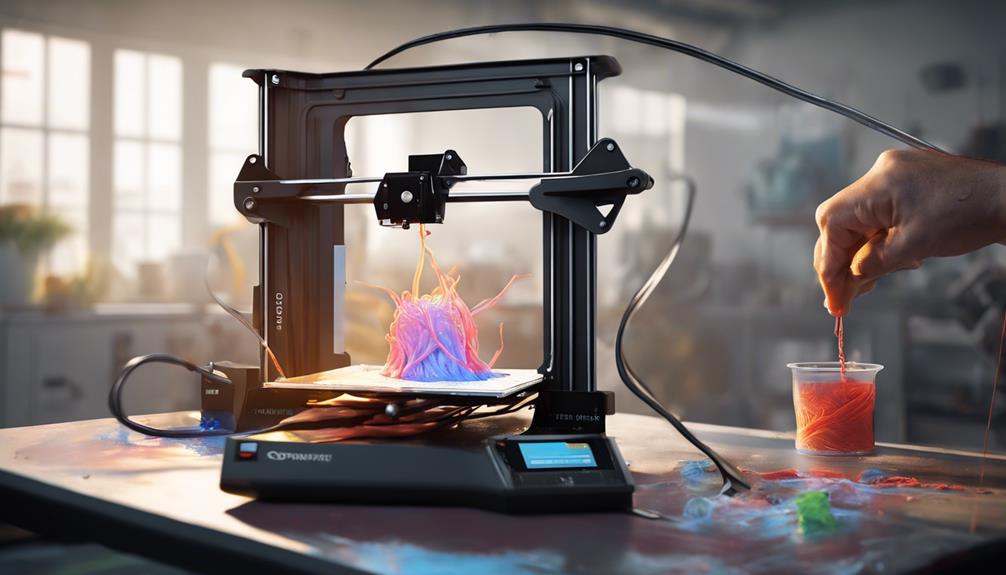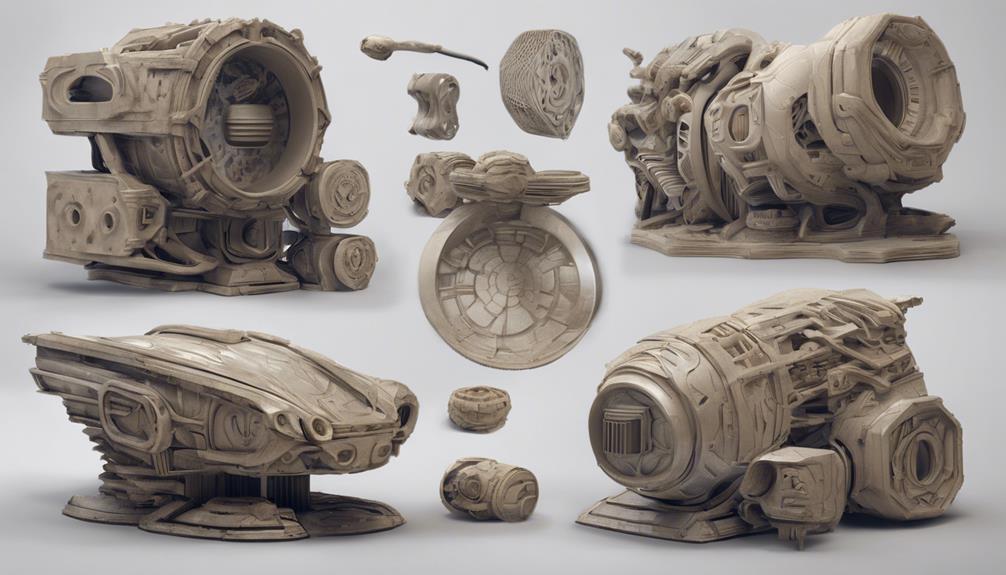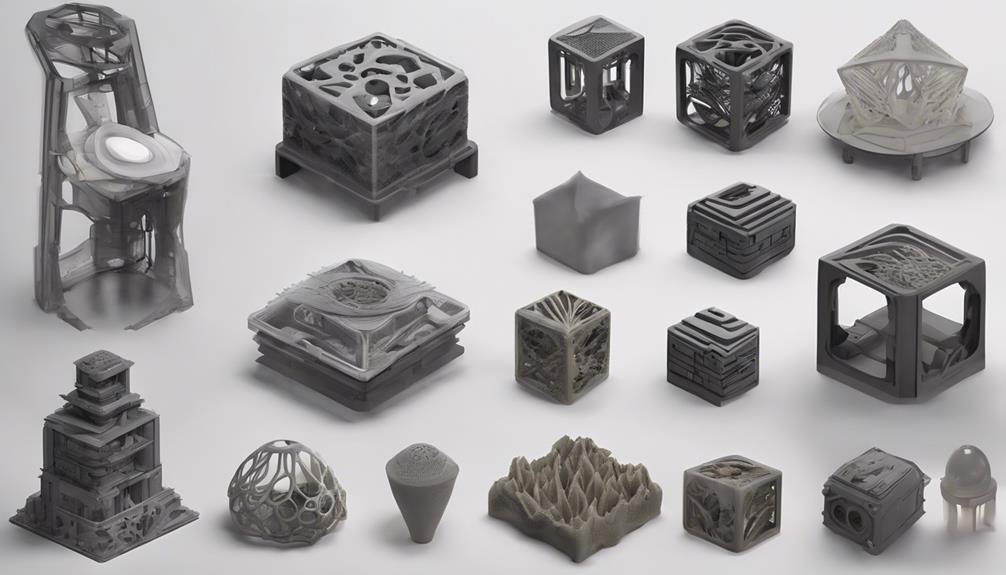When it comes to 3D printing, did you know that up to 70% of failed prints can be attributed to incorrect temperature and speed settings? Ensuring your parameters are optimized is vital for achieving successful outcomes. Imagine the satisfaction of consistently producing flawless prints with just the right balance of settings. How can you attain this level of precision in your 3D printing journey? Stay tuned to uncover the key elements that will lead you to 3D printing success.
Temperature and Speed Settings

When calibrating your 3D printer, ensuring precise temperature and speed settings is essential for achieving high-quality print results and efficiency. To optimize your prints, consider factors like extruder temperature and movement speed.
Different filament types have specific temperature ranges, with PLA being popular for its forgiving properties. It's recommended to start at 200°C and adjust in 5° increments, staying within 190-220°C for best results. Note that nozzles can reach up to 250°C for ABS printing.
Remember that different colors may require adjustments in temperature settings. By fine-tuning these variables, you can achieve better layer adhesion, print quality, and overall successful 3D prints.
Symptoms of Incorrect Temperature
To identify potential issues related to incorrect temperature settings in 3D printing, observe signs such as the inability to bridge segments at high temperatures and the presence of droopy, messy prints when temperatures are too high.
- Adjust temperature for better layer adhesion
- Heated bed at 60°C can solve detachment issues
- High bed temperature can cause 'elephant's foot' issue
- Monitor print quality for signs of temperature-related problems
Speed Considerations

Taking into consideration the impact of speed on print quality and time is vital when optimizing your 3D printing process. Balancing speed for strength and aesthetics is essential. Slicers can provide time estimates to help you make tradeoffs. If your print time exceeds your deadline, consider adjusting settings. Movement speed plays a significant role in faster printing. To help you understand the importance of speed in 3D printing, take a look at the table below:
| Speed Level | Print Quality | Time Efficiency |
|---|---|---|
| Slow (20mm/s) | High | Low |
| Moderate (40mm/s) | Balanced | Moderate |
| Fast (60mm/s) | Lower | High |
Relationship Between Temperature and Speed
Consider the impact of temperature on print quality and adhesion while also understanding how speed influences movement and layering in 3D printing.
- Adjust temperature for best layer adhesion
- Find balance between speed and print quality
- Experiment with different speeds for best results
- Monitor print output and adjust settings accordingly
Conclusion and Additional Information

Experimenting with your printer, filaments, and designs is essential for achieving the best 3D printing settings. Temperature and speed customization are vital components to master for successful prints. Through trial and error, you can find the ideal parameters that work best for your specific setup.
Remember, experience and understanding are key to improving your 3D printing skills. Utilizing recommended products can simplify the selection process and enhance your overall printing experience. As the author of this article, my dedication to 3D printing drives me to share valuable insights with you.
Feel free to engage with us through comments to further enhance your knowledge and skills in the world of 3D printing.
Frequently Asked Questions
Can I Use the Same Temperature Settings for All Colors of PLA Filament?
Yes, you can't use the same temperature for all PLA filament colors. Different colors may need different temperatures. Start at 200°C and adjust in 5° steps. Stick within 190-220°C range for best results. Experiment for ideal settings.
How Can I Prevent Warping When Printing With ABS at High Temperatures?
To prevent warping when printing with ABS at high temperatures, make sure your bed is heated to 60°C. Adjust nozzle temperature within 190-220°C range. Keep nozzle at max 250°C. Proper heating helps prevent detachment issues and promotes successful ABS prints.
Is There a Specific Speed Setting for Intricate Designs for Optimal Results?
For intricate designs, adjust speed based on complexity and detail. Experiment to find the right balance between speed and quality. Keep in mind that slower speeds may enhance intricate details but might extend printing time.
What Should I Do if My Print Is Taking Too Long to Complete?
If your print is taking too long, adjust speed settings for quicker completion. Balance between speed and quality to meet deadlines. Monitor progress and make necessary tweaks for efficient results. Enjoy the process!
How Do I Know When to Prioritize Speed Over Print Quality?
When to prioritize speed over print quality depends on your needs. Balance both for the best results. Adjust settings according to deadlines and desired outcomes. Experiment with different speeds to find the right balance for your project.
Conclusion
Congratulations on mastering the art of 3D printing! By optimizing temperature and speed settings, you've discovered the secret to success. Keep experimenting and pushing the boundaries of what's possible.
Embrace the challenges and setbacks as opportunities for growth. Your dedication and perseverance will continue to yield exceptional results.
The world of 3D printing is yours to conquer – keep pushing forward and creating amazing things!